Exploring Traditional Chinese Dishes: What Should I Eat in China?
When you visit China, your taste buds are in for an adventure. The country is rich in culinary traditions, and each region boasts unique flavors, ingredients, and cooking styles. From fiery Sichuan dishes to delicate Cantonese dim sum, knowing what to eat can enhance your travel experience. Below is a curated list of traditional Chinese dishes that will make your trip unforgettable.
1. Peking Duck
Peking Duck is a Beijing classic. This dish features a whole duck roasted until the skin is crispy and served with thin pancakes, hoisin sauce, and sliced scallions. You roll the duck and condiments in the pancake for a delightful burst of flavor. Doesn’t that sound mouth-watering?
2. Dumplings (Jiaozi)
Dumplings are popular throughout China but are especially associated with northern regions. Made of a thin dough filled with meat or vegetables, dumplings can be boiled, fried, or steamed. They’re often served with soy sauce or vinegar for dipping.
3. Mapo Tofu
A staple from Sichuan province, Mapo Tofu presents a perfect combination of silken tofu, ground pork, and spicy bean paste. The numbing heat of Sichuan peppercorns paired with garlic and ginger creates a depth of flavor that is hard to resist.
4. Kung Pao Chicken
This dish is a beloved favorite globally but originated from Sichuan cuisine. It includes diced chicken, peanuts, and vegetables tossed in a sweet and sour sauce. The balance of flavors and textures makes it an exciting choice!
5. Hot Pot
Hot Pot is a communal dining experience that’s perfect for sharing. You have a bubbling pot of broth at the center of the table, where you cook a variety of meats, seafood, and vegetables to your liking. It’s not just a meal but an occasion!
6. Noodles
Noodles come in many shapes and forms throughout China. One beloved variety is Lanzhou Beef Noodles, known for its hand-pulled noodles served in a fragrant beef broth, topped with fresh herbs. Whether you enjoy them in broth, stir-fried, or cold, noodles are essential to Chinese cuisine.
7. Xiao Long Bao (Soup Dumplings)
Xiao Long Bao are little dumplings filled with rich broth and meat, usually pork. The best way to eat them is to take a small bite, sip the savory broth, and enjoy the rest of the dumpling in one delicious mouthful.
8. Char Siu (BBQ Pork)
This Cantonese dish features marinated pork that is roasted to perfection. The sweet, sticky glaze from the marinade caramelizes on the outside, giving it a distinctive flavor. It’s often served with rice or noodles.
Beyond specific dishes, exploring the diverse culinary landscape is essential to understanding China’s culture. Here are a few things you might want to keep in mind when eating in China:
- Regional Differences: Each province has its own specialties. Be sure to explore local dishes in the area you’re visiting.
- Street Food: Don’t overlook street-side vendors. They offer a glimpse into local life and are often where you’ll find some of the most authentic flavors.
- Dining Etiquette: Be aware of local dining customs. For instance, sharing food is common, and it’s polite to offer dishes to others before taking for yourself.
Wherever you travel in China, savoring local food is a must-do on your list. Not only will you find delicious dishes to satisfy your palate, but you will also dive deep into the culture and traditions that shape this incredible nation. For more insights on Chinese cuisine, check out China Highlights to learn more about what should i eat in China.
As you explore these flavors, let your taste buds lead the way. Every dish has a story, and every meal is an experience waiting to unfold.
Regional Cuisines: A Culinary Tour Across China
Traveling through China is not only a feast for the eyes but also a culinary adventure. Each region offers its signature dishes, reflecting local ingredients, traditions, and flavors. Exploring these regional cuisines can enhance your experience and provide a deeper understanding of Chinese culture. Here’s a culinary tour across China that will guide you on what to eat in different regions.
Beijing: Dive into Peking Duck
No trip to Beijing is complete without savoring Peking Duck. This iconic dish is known for its crispy skin and tender meat. Served with thin pancakes, hoisin sauce, and sliced vegetables, it’s a must-try. Enjoy it in traditional restaurants where chefs prepare the duck right in front of you.
Sichuan: Spice Up Your Life
If you love bold and spicy flavors, Sichuan Province is your destination. Known for its numbing spice, Sichuan cuisine utilizes peppercorns, garlic, and chili peppers. A popular dish to try is mapo tofu, which combines tofu, minced meat, and a spicy sauce. Don’t forget to experience hot pot, where you cook ingredients in a simmering pot of spicy broth right at your table.
Cantonese: Dim Sum Delights
Cantonese cuisine is famous for its dim sum, a collection of small, delicious dishes perfect for sharing. Enjoy dumplings, buns, and spring rolls, often paired with tea. Places like Guangzhou and Hong Kong are renowned for their dim sum parlors. Be sure to try har gow (shrimp dumplings) and char siu bao (barbecue pork buns) during your visit.
Shandong: Taste the Ocean
Located near the sea, Shandong cuisine emphasizes fresh, local seafood. Dishes here often balance flavors with a touch of sweetness. One must-try is sweet and sour carp, which highlights the region’s approach to preparing fish. Additionally, custard buns provide a delightful end to any meal.
| Region | Signature Dish | Key Ingredients |
|---|---|---|
| Beijing | Peking Duck | Duck, Pancakes, Hoisin Sauce |
| Sichuan | Mapo Tofu | Tofu, Minced Meat, Chili |
| Cantonese | Dim Sum | Dumplings, Buns, Tea |
| Shandong | Sweet and Sour Carp | Carp, Sugar, Vinegar |
Guangxi: Unique Rice Noodles
In Guangxi province, you can find unique rice noodles known as Guilin rice noodles. This dish often includes toppings such as spicy beef, pickled vegetables, and peanuts. It’s a fulfilling option that allows you to taste the essence of local flavors. Street vendors frequently serve this dish, making it easily accessible for travelers.
Yunnan: A Mushroom Paradise
Ready to discover a different world of flavors? Yunnan’s cuisine is known for its use of mushrooms and herbs. Signature dishes like crossing-the-bridge noodles, featuring a bowl of hot broth and various fresh ingredients, offer a unique culinary experience. The blend of flavors will leave you wanting more!
Xinjian: Taste the Lamb
Head to Xinjiang for a taste of tender lamb dishes influenced by Uyghur culture. One of the most popular dishes is lamb skewers seasoned with cumin and chili. Try to visit a local restaurant where you can see cooks grilling the skewers over an open flame, providing a delicious and smoky flavor.
Exploring these regional cuisines offers a taste of China’s diversity. Each bite tells a story of its history and culture. So, when asking yourself, “What should I eat in China?” remember to embrace the local specialties of each region. For deeper insights into these delicious culinary traditions, you can visit this guide.
The Role of Street Food in Chinese Culture
Street food holds a unique and flavorful place in Chinese culture, acting as a window into the diverse culinary landscape of the country. From bustling night markets to roadside stalls, the vibrant aroma of various dishes fills the air, drawing locals and tourists alike. Here, the communal experience of eating becomes a celebration of rich traditions, local ingredients, and culinary creativity.
One of the major draws of street food is that it showcases regional specialities. Each province in China prides itself on its own unique dishes, and street food is often a reflection of local flavors and ingredients. For instance:
- Sichuan: Known for its bold and spicy flavors, dishes like Sichuan hot pot and stir-fried noodles stand out.
- Shanghai: The city offers delicacies such as xiaolongbao (soup dumplings) and crispy fried spring rolls.
- Beijing: Here, the renowned Peking duck is a must-try, often enjoyed at local food stalls.
Street food is not just about deliciousness but also about communal culture. It’s a social activity that encourages interaction. People from all walks of life gather around stalls, sharing meals, stories, and laughter. The casual setting allows for connections that might not happen in formal dining environments. You might find office workers enjoying lunch alongside families and tourists, all bonding over the joy of food.
Another fascinating aspect of street food in China is its affordability. Most dishes are relatively inexpensive, allowing everyone, regardless of their budget, to enjoy a satisfying meal. This accessibility contributes to the popularity of street food as an everyday dining option. Many people purchase food from street vendors during their commute, making meals convenient and enjoyable.
Cooking techniques vary widely across different street food stalls, adding to the overall charm and experience. Here are some common street food preparation styles:
- Grilling: Skewered meats and vegetables are grilled over charcoal to infuse a smoky flavor. You’ll often find vendors selling grilled chicken skewers in the evenings.
- Frying: Many street foods are deep-fried to perfection, like youtiao (Chinese fried dough), served as breakfast options.
- Steaming: Dumplings and buns are often steamed, keeping them moist and flavorful. The sight of steaming bamboo baskets is common at markets.
Moreover, the street food experience encourages culinary experimentation. Chefs often play with flavors and textures, sourcing ingredients locally and adapting traditional recipes to blend different cooking styles. Unique offerings, such as cold noodles or spicy snails, invite adventurous eaters to taste something new and unexpected.
Food safety remains a topic of discussion, particularly for those unfamiliar with street dining. While many street vendors take pride in maintaining high hygiene standards, you should always use your judgment. Observing the crowd around a stall can indicate freshness and quality. Engaging with the vendor about their ingredients and preparation can enhance your experience and ensure you are consuming safe food.
Significant events and festivals in China often highlight street food. During celebrations like the Spring Festival or Lantern Festival, particular street foods, such as dumplings and glutinous rice cakes, take center stage. These dishes not only represent the culinary heritage but also traditional beliefs and customs, reflecting the cultural significance of food in social gatherings.
Street food is more than just sustenance in China; it is a cultural phenomenon that wraps together social interaction, local traditions, and a kaleidoscope of flavors. Whether savoring baozi at a stall or indulging in stinky tofu at a night market, every bite tells a story of the vibrant culture that is uniquely Chinese.
Must-Try Desserts: Sweet Treats to Sample in China
When you think of China, images of vibrant street markets and tantalizing flavors often come to mind. But among the myriad of savory dishes, don’t overlook the sweet side of Chinese cuisine. From the ubiquitous bubble tea to the elegance of mooncakes, there is a world of mouthwatering desserts just waiting for you to explore. If you find yourself in China, here are some must-try desserts that will surely delight your taste buds.
1. Mochi
Originally from Japan, mochi has firmly established itself in Chinese desserts. This sticky, chewy rice cake is often filled with sweet surprises. You can find mochi stuffed with red bean paste, fresh fruit, or even ice cream. When visiting places like Beijing or Shanghai, keep an eye out for this delightful treat.
2. Egg Tarts
These flaky, buttery pastries filled with smooth egg custard are a staple in Cantonese cuisine. Egg tarts are best enjoyed warm, right out of the oven. The sweet fragrance and delicate texture make them a favorite at dim sum restaurants or local bakeries. Whether you prefer the traditional Hong Kong style or the Macau variation with a crispy top, this dessert will not disappoint.
3. Sweet Bean Soup
This comforting dessert comes in multiple variations depending on the region. It typically features azuki beans cooked with rock sugar until soft, then served either warm or chilled. Sweet bean soup can also include ingredients like sago or coconut milk, adding a creamy texture. It’s an excellent way to cool down on a hot day.
4. Tangyuan (Sweet Glutinous Rice Balls)
Often eaten during Lantern Festival, tangyuan are glutinous rice balls filled with sweet fillings like black sesame paste or sweetened peanut butter. They are typically served in a warm syrup made from water and sugar. The texture is wonderfully chewy, and each bite brings a burst of sweet flavor. Not only are they delectable, but they also symbolize family reunion and togetherness.
5. Fried Dough Sticks (Youtiao)
A favorite breakfast item, youtiao are long, deep-fried dough sticks that are beautifully crisp on the outside and soft on the inside. Although they are not a dessert in the traditional sense, they are often served alongside sweetened soy milk or rice porridge, making them a perfect sweet treat to start your day.
6. Dragon Beard Candy
This traditional Chinese candy dates back to the Han Dynasty. Made from sugar and maltose, the candy resembles fine threads of hair and is typically filled with crushed peanuts and coconut flakes. The delicate appearance and unique texture create a delightful experience. You might catch a street vendor making it right before your eyes!
7. Mooncakes
These rich pastries are a staple during the Mid-Autumn Festival. Mooncakes are often filled with lotus seed paste or sweet red bean paste, and they can feature salted egg yolks as well. The intricately designed crust and the chewy texture make mooncakes not just a treat for the palate but also a feast for the eyes. If you visit during the festival season, be sure to try a variety of flavors!
8. Almond Jelly (Almond Tofu)
Served as a refreshing dessert, almond jelly is made from almond milk and agar-agar. This jelly-like dessert is light and subtly sweet. It’s often garnished with fruit or syrup. You can find it served in many Chinese restaurants, especially as a refreshing finish to a heavy meal.
9. Pineapple Bun (Bor Buns)
Despite the name, pineapple buns don’t actually contain pineapple. Instead, they have a sweet, crumbly topping that gives the appearance of a pineapple. The soft bun itself is mildly sweet and best enjoyed fresh from the oven. Oftentimes, you can add a slice of butter inside for an extra indulgence.
To round off your dessert adventure, remember to explore local bakeries and street markets. Each region of China boasts its own unique spin on desserts, providing endless opportunities for sampling new flavors. For more information about Chinese desserts and culinary exploration, check out China Highlights and The Beijinger.
Whatever your preference, each of these sweet treats offers a piece of Chinese culture and history. Don’t miss the chance to indulge in these desserts—your taste buds will thank you!
Understanding Chinese Tea Varieties and Their Pairings
China is famed for its remarkable variety of teas, each with unique tastes and health benefits. Understanding these varieties can enhance your tea-drinking experience and pairings with food. Here are some of the prominent Chinese tea varieties and the foods they complement beautifully.
One of the oldest and most appreciated is Green Tea. This tea is known for its fresh, grassy flavor and a myriad of health benefits, including antioxidant properties. Popular types of Chinese green tea include:
- Longjing (Dragon Well): A sweet and slightly nutty flavor, perfect to pair with light snacks like fresh fruits or steamed vegetables.
- Taiping Houkui: Its sweet and floral notes go well with seafood dishes or chicken.
- Biluochun: This tea has a fruity aroma and goes great with light pastries or sweet desserts.
Next, let’s explore Oolong Tea, known for its complex flavors ranging from floral to creamy. Oolong is partially oxidized and often holds a robust taste. Here are some varieties:
- Tieguanyin (Iron Goddess of Mercy): Its rich, sweet flavor pairs excellently with dim sum or roasted meats.
- Da Hong Pao (Big Red Robe): This strong variety goes well with spicy dishes like Szechuan cuisine.
- Wuyi Rock Tea: Its mineral notes pair nicely with grilled or smoked foods.
Black Tea, or red tea as known in China, delivers a bold flavor profile. It’s fully oxidized, offering a rich depth perfect for hearty meals. Popular types include:
- Keemun: This tea has a smooth edge and pairs well with strong cheeses or dark chocolate.
- Dianhong: With a golden hue and a robust flavor, it complements grilled meats and spicy dishes.
- Jinjunmei: Known for its sweet notes, it goes well with pastries or even spicy noodle dishes.
White Tea is the least processed, offering delicate flavors and numerous health benefits. Some popular varieties are:
- Bai Mudan (White Peony): This tea’s floral notes match well with light salads or fruit platters.
- Silver Needle: It has a sweet and mellow flavor that pairs exquisitely with simple snacks or desserts.
If you’re venturing into Herbal Tea, you’ll find a blend rich in diverse flavors and benefits. Although not traditionally classified as tea, these infusions are quite popular in China. Consider:
- Chrysanthemum Tea: Has a floral taste that complements sweet treats or light pastries.
- Pu-erh Tea: Known for its earthy flavor, it pairs remarkably with savory dishes like fried rice or rich meats.
Tea Pairing Guide
| Tea Type | Flavor Profile | Ideal Food Pairings |
|---|---|---|
| Green Tea | Fresh, Grassy | Fruits, Steamed Veggies |
| Oolong Tea | Floral, Creamy | Dim Sum, Roasted Meats |
| Black Tea | Bold, Robust | Grilled Meats, Strong Cheeses |
| White Tea | Delicate, Floral | Light Salads, Desserts |
| Herbal Tea | Varied, Aromatic | Sweet Treats, Savory Dishes |
To explore more about Chinese teas and their health benefits, you may find Teavivre particularly insightful. For a deep dive into tea history and culture, check China Daily, which offers detailed coverage on everything from ceremonies to innovations in tea.
Experimenting with different Chinese tea varieties and food pairings can significantly enhance your culinary adventures. Take the time to discover your favorite combinations and enjoy the flavors of China in each cup!
Vegetarian and Vegan Options in Chinese Cuisine
When exploring Chinese cuisine, many might initially think of its popular meat-based dishes. However, vegetarian and vegan options abound, offering a rich variety of flavors and textures that satisfy both plant-based eaters and meat-lovers alike. This culinary landscape emphasizes fresh vegetables, tofu, grains, and legumes, making it easier than ever to find delicious meat-free meals in China.
One of the cornerstones of vegetarian and vegan eating in China is tofu. This versatile soy product can be found in numerous forms, from silken to firm, and is often used in stir-fries, soups, and even desserts. Common tofu dishes include:
- Mapo Tofu: A spicy Sichuan dish made with silken tofu and a zesty sauce made from chili bean paste.
- Sweet and Sour Tofu: Crispy tofu tossed in a tangy sauce with bell peppers and pineapple.
- Stir-fried Tofu with Mixed Vegetables: Tofu sautéed with seasonal vegetables such as bok choy, carrots, and mushrooms.
Vegetables play a starring role in Chinese vegetarian cuisine. You can expect to find a variety of seasonal vegetables prepared in different styles, such as steaming, stir-frying, and braising. Some must-try vegetable dishes include:
- Garlic Spinach: Fresh spinach sautéed with garlic, making it a simple yet flavorful side dish.
- Eggplant in Garlic Sauce: Tender eggplant cooked in a savory garlic sauce, often enjoyed with steamed rice.
- Stir-Fried Broccoli with Oyster Sauce: Broccoli tossed in a vegan oyster sauce for added umami.
For those looking for hearty grains, Chinese cuisine features various rice and noodle dishes. Both are typically served with an array of vegetables and sauces. Some popular choices include:
- Vegetable Fried Rice: Fragrant rice stir-fried with peas, carrots, and green onions, perfect for a filling meal.
- Chow Mein: Noodles stir-fried with an assortment of vegetables, often made without animal products.
- Rice Noodle Soup: A comforting bowl of rice noodles served in a savory broth with vegetables and herbs.
Dim sum also offers excellent vegetarian options. Traditionally served as small plates meant for sharing, you can discover various steamed buns and dumplings filled with vegetables and mushrooms. Some favorites include:
- Vegetable Dumplings: Dumplings stuffed with finely chopped vegetables, steamed to perfection.
- Steamed Buns: Fluffy buns filled with spiced vegetables and sometimes mushrooms, representing perfect bite-sized snacks.
- Spring Rolls: Crispy rolls filled with a mix of vegetables, often served with a dipping sauce.
For many regions in China, particularly in the Buddhist tradition, vegetarian cuisine also carries deep cultural significance. Many monks follow strict vegetarian diets, and their dishes are often incredibly flavorsome and varied, emphasizing harmony and balance. This influence has led to a broader acceptance of vegetarianism and has made plant-based dining options increasingly popular across the country.
In recent years, the growth of veganism is notable, with plenty of restaurants catering specifically to plant-based diets. If you’re on the hunt for vegan options in urban areas, try dining at:
- Vegan restaurants: Look for places that specialize in vegan dishes, as they often provide innovative takes on traditional Chinese cuisine.
- Vegetarian eateries: Many of these establishments offer a range of vegan choices, alongside their vegetarian offerings.
- Markets: Street food stalls frequently have delightful vegan options like steamed buns and various vegetable dishes.
For further exploration, you can check out vegan and vegetarian resources such as China Highlights and Eat This.
Chinese cuisine, with its diverse and flavorful vegetarian and vegan options, provides a delightful experience for anyone seeking meat-free meals. Embrace the vibrant colors and rich tastes of these dishes as you discover the culinary treasures that await you in China. No matter where you roam in this vast country, you’re sure to find tasty vegetarian and vegan food that will leave your taste buds craving more!
Tips for Eating Out: Navigating Menus in China
Eating out in China can be an exciting adventure. With an array of delicious dishes available, understanding the menus can be crucial to enjoy your dining experience fully. Here are some practical tips to help you navigate menus in China with ease.
Know the Basics of Chinese Cuisine
Before diving into the menu, it’s important to familiarize yourself with the fundamentals of Chinese cuisine. Here are some basic terms that will help you:
- Dim Sum: A style of dining that consists of small plates of dumplings and other snacks.
- Hot Pot: A communal way of cooking where you simmer ingredients in a pot of flavorful broth.
- Sichuan: Known for its spicy dishes using peppercorns that numb the mouth.
- Cantonese: This style emphasizes fresh, light flavors, often steaming or stir-frying ingredients.
Understanding Menu Layouts
Menus in China can vary quite a bit in their layout. Here are a few common formats you might encounter:
- Pictures: Some menus come with photos of the dishes which can be very helpful for visual learners.
- Chinese Only: Many local eateries present their menus exclusively in Chinese. Learning a few characters can be beneficial.
- Romanized Versions: Some restaurants may offer a version of their menu that uses the Pinyin system, making it easier for you to pronounce the dish names.
Ask for Recommendations
Don’t hesitate to ask the staff for their recommendations. Most restaurant staff can suggest popular dishes that you might enjoy:
- Ask about the most popular dish of the day.
- Get insights into seasonal specials that might not be advertised.
- Inquire about dishes that locals frequently enjoy.
Be Adventurous with Your Choices
Chinese cuisine is diverse, and sometimes stepping out of your comfort zone can lead to delightful discoveries. Here are a few iconic dishes to consider:
- Peking Duck: A renowned dish from Beijing, celebrated for its crispy skin and flavorful meat.
- Mapo Tofu: A spicy Sichuan dish consisting of tofu set in a spicy sauce made with Doubanjiang.
- Chow Mein: Stir-fried noodles that can come with various vegetables and meats.
Use Technology to Your Advantage
Smartphones can enhance your dining experience significantly. Here are some helpful apps:
- Google Translate: Useful for translating menus and understanding the descriptions.
- WeChat: Many restaurants use this app for online ordering and reservations.
- TripAdvisor: Check reviews and get suggestions from other diners.
Be Mindful of Ingredients
If you have food allergies or dietary restrictions, make sure to communicate this clearly. Here’s how:
- Learn essential phrases in Chinese, such as “I’m allergic to…”
- Carry a note card with your dietary restrictions in Chinese.
- Use a translation app if you’re unsure how to explain your needs.
Experience Local Etiquette
Dining etiquette can also enhance your experience in China. Consider these tips:
- Try to share dishes with everyone at the table, as Chinese dining is often communal.
- It’s polite to wait for the host to begin eating before you start.
- While some places allow tipping, it’s not as common in China.
When you’re ready to indulge in the rich tapestry of flavors that Chinese cuisine offers, remember these tips for navigating menus and enjoying your meals. For further exploration of Chinese food and dining etiquette, consider visiting Taste of Home to dive deeper into the fascinating world of Chinese dining culture.
Don’t forget to enjoy the experience! Dining in China is as much about the food as it is about sharing moments with friends and family. Embrace the flavors, engage in local customs, and make your dining experience memorable.
Key Takeaway:
When considering what to eat in China, the culinary landscape is as diverse as its vast geography. To truly appreciate the flavors and experiences, it’s essential to explore traditional Chinese dishes that showcase the country’s rich culinary history. Start with iconic meals like Peking Duck, known for its crispy skin and flavorful meat, or Dim Sum, which offers a delightful array of small dishes meant for sharing. Each region of China brings something unique to the table, making regional cuisines an exciting aspect of culinary exploration. From the spicy Sichuan dishes to the subtler flavors of Cantonese cuisine, there’s something for every palate.
Street food also plays a crucial role in Chinese culture, offering an authentic taste of local life. Vendors serve everything from skewered meats to savory pancakes, providing an accessible way to experience traditional flavors. Don’t miss out on trying Xi’an’s famous Rou Jia Mo (meat sandwiches) or Beijing’s Jianbing (Chinese crepes) for a true street food adventure.
For those with a sweet tooth, China has a range of must-try desserts. Delicacies like Mango Pudding and Egg Tarts tantalize the taste buds, providing a perfect ending to your meal. Pair these desserts with the right variety of Chinese tea, which is not only soothing but also enhances the flavors of your food. Different teas, such as Oolong and Jasmine, complement various dishes beautifully and are worth exploring.
Vegetarians and vegans will also find plenty of options in Chinese cuisine. Many restaurants offer delicious plant-based dishes, from Kung Pao Tofu to Mapo Dofu, ensuring that everyone can enjoy a taste of China, regardless of dietary restrictions.
When it comes to eating out in China, navigating menus may seem daunting at first. Familiarize yourself with common dish names and try using translation apps to make the process smoother. Engaging with locals and asking for recommendations can lead you to hidden gastronomic gems.
China offers a rich tapestry of culinary experiences, blending traditional dishes, unique regional flavors, vibrant street food, delectable desserts, and an array of vegetarian options. By immersing yourself in the local food culture, you will not only satisfy your taste buds but also gain a deeper understanding of China’s rich history and lifestyle. So, when pondering “What should I eat in China?” remember to embrace the journey and enjoy each flavorful bite.
Conclusion
When it comes to "What should I eat in China?", the options are as diverse and rich as the country itself. From the delightful layers of traditional dishes like Peking duck and dumplings, each bite offers a glimpse into the cultural heritage that defines Chinese cuisine. As you traverse the vast regions of China, you will discover that each area boasts its own distinctive flavors—Sichuan’s bold spices, Cantonese dim sum, and the aromatic dishes of the north are just the beginning of your culinary adventure.
Street food is an essential aspect of your culinary exploration, presenting the opportunity to enjoy authentic local delicacies at budget-friendly prices. Don’t shy away from these bustling stalls; they often serve some of the most genuine dishes around. Sweet treats like mooncakes and sesame balls provide a satisfying way to experience Chinese dessert culture, while tea varieties like green, black, and oolong offer a perfect pairing for any meal.
For those following a vegetarian or vegan diet, Chinese cuisine provides a wealth of delicious options. Stir-fried vegetables, tofu dishes, and hearty soups ensure that you won’t miss out on flavor or nutrition. While navigating menus may seem daunting at first, familiarizing yourself with common phrases and culinary terms can help enhance your dining experience.
Embracing the diverse flavors, exploring different cuisines, and understanding the cultural significance behind each dish allows you to truly appreciate the essence of Chinese dining. Whether you are a foodie or simply curious about local flavors, China promises a feast for the senses that goes beyond mere sustenance—each dish tells a story waiting to be savored.
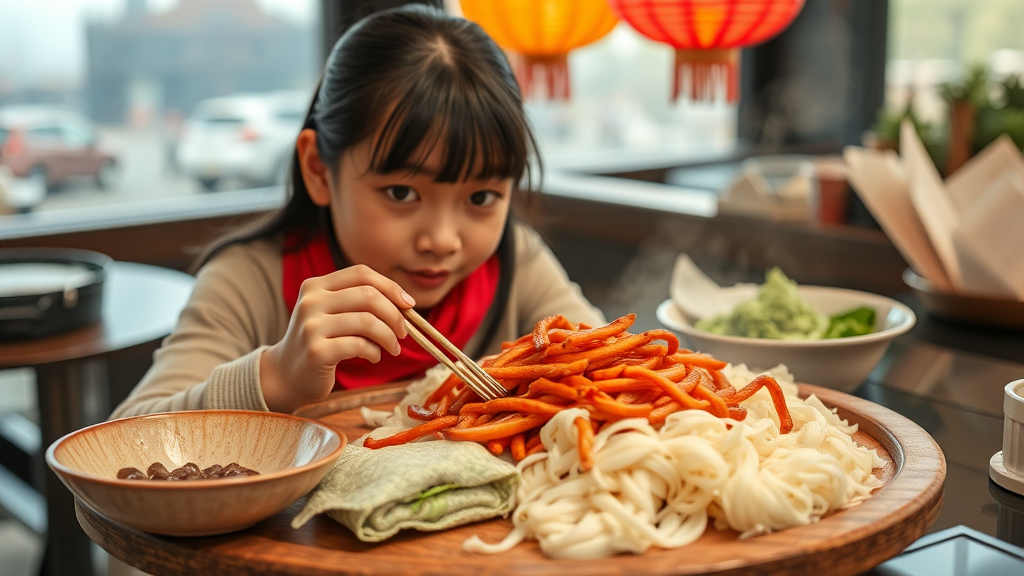

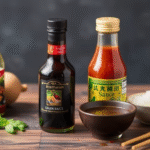
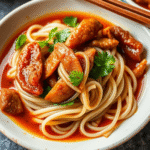

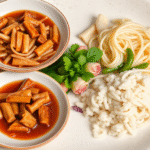
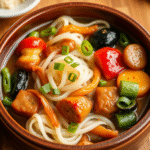
Leave a Reply